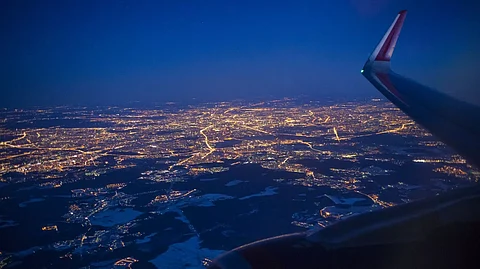
- NEWS
- the EDIT
- COMMENTARY
- BUSINESS
- LIFE
- SHOW
- ACTION
- GLOBAL GOALS
- SNAPS
- DYARYO TIRADA
- MORE

On the evening of 29 March 2020, while the rest of Metro Manila was still learning to disinfect doorknobs and log into Google Meet, a medevac jet exploded into a fireball on Runway 24 of the Ninoy Aquino International Airport.
Eight lives were lost in seconds — doctors, flight crew, a patient — all gone before the night’s lockdown curfews could even be enforced. A tragedy with no time to announce itself. No time for last words.
The DAILY TRIBUNE didn’t post a condolence card on Instagram. We didn’t retweet shaky footage or copy-paste statements. Instead, the paper — represented by yours truly as Metro editor, and Paul, our online hand — pushed through four police checkpoints, flashing press IDs and quarantine passes like badges in a war zone.
Because when a plane crashes in the middle of a pandemic, you don’t Zoom it in. You go.
While most of the media hunkered down behind screens and schedules, we never spent a single day working from home. WFH — three letters that meant nothing to us then, and still don’t now. Editors, reporters, photographers, drivers, layout artists — we all showed up. In person, in force.
We covered that night, and the long nightmare that followed, the only way we knew how: by being there.
Supporters from most unlikely places
As competitors did interviews in soft lighting with good mics, we chased sirens through empty streets. We elbowed through sealed barangays and Covid checkpoints, until cops recognized our cars and waved us through — sometimes just to ask for a copy of the paper, fresh off the press.
There was a crisis policy, yes. Drafted and implemented by DAILY TRIBUNE management face-to-face — never over a webinar. We left the newsroom only to hit the field, never to hide.
That one crash? It became part of a blur. In the months that followed, we pushed into the locked-down edges of the city where even ambulances paused — Baseco, Tondo, the ragged border towns of Cavite. We met families starving behind caution tape, tricycle drivers ducking patrols, barangay tanods who hadn’t seen home in days.
We broke that story, with video, of an overzealous policeman shooting a soldier coming home from duty in the provinces, only to meet his end a few kilometers from his barangay.
We were chased out, sprayed with Lysol, mistaken for medics, called vultures, thanked with boiled eggs. And through it all — we stayed.
We showed up. We told the truth. And we paid the price. More than two dozen from the TRIBUNE —reporters, photographers, layout artists — got Covid. But no one died. Not one.
Management fought to keep us standing. There were vehicles, vitamins, PPEs, disinfectants, the first precious vaccines — scrambled for and won.
When meds were scarce, we scoured pharmacies and called in favors to find antiviral tablets, oxygen tanks, anything to get a colleague through the night. We cooked food right in the office pantry, feeding whoever was on shift, or sick, or simply stuck, with nowhere else to go.
The newsroom reeked of alcohol spray and exhaustion. It looked like something between a hospital ward and a bunker. But the presses never stopped. We didn’t shut down. We didn’t “pause.” And we never Zoomed. And we didn’t just write. We brought the outside world into lockdown homes through digital field shows like Gising Na, streaming real-time reports and interviews from the frontlines — on the ground, not from the living room.
While others piped in canned quotes and sanitized pressers, we showed viewers what was happening out there, where it was raw, where it hurt, where it mattered.
Some of our youngest reporters had barely filed their first stories when lockdowns began. They learned the job wearing N95 masks and typing leads with alcohol-drenched fingers. They didn’t inherit the newsroom — they earned it, one checkpoint at a time.
And our readers stayed with us. While disinformation spread faster than the virus, they still checked our feed at dawn. Still waited for the paper. Still trusted us to make sense of the noise.
Today, others still haven’t returned. Many journalists work behind Slack threads and blurred backgrounds. They ping instead of shout. Deadlines drift like ghosts through group chats.
Not us. We’re still here. In the newsroom. Still shouting across desks about headlines. Still sprinting for the coffee maker. Still jumping when that lone scanner crackles.
Because the story doesn’t wait. It doesn’t care about your bandwidth, or your Bluetooth headset, or your carefully curated home office lighting.
It happens out there — in the smoke, in the heat, in the blur of sirens — and someone has to meet it before it’s gone.
That someone was us.
Postscript: Paul and I successfully navigated every checkpoint that night. Somewhere on the road, we stopped to carry a sack of rice for an old woman. She asked if we were with a politician.
Paul said no. “Just the press.”
“Coming off a day’s work,” I added. And now, five years on from that fireball on Runway 24 — and 25 years since the DAILY TRIBUNE first rolled off the press — we’re still at it.
